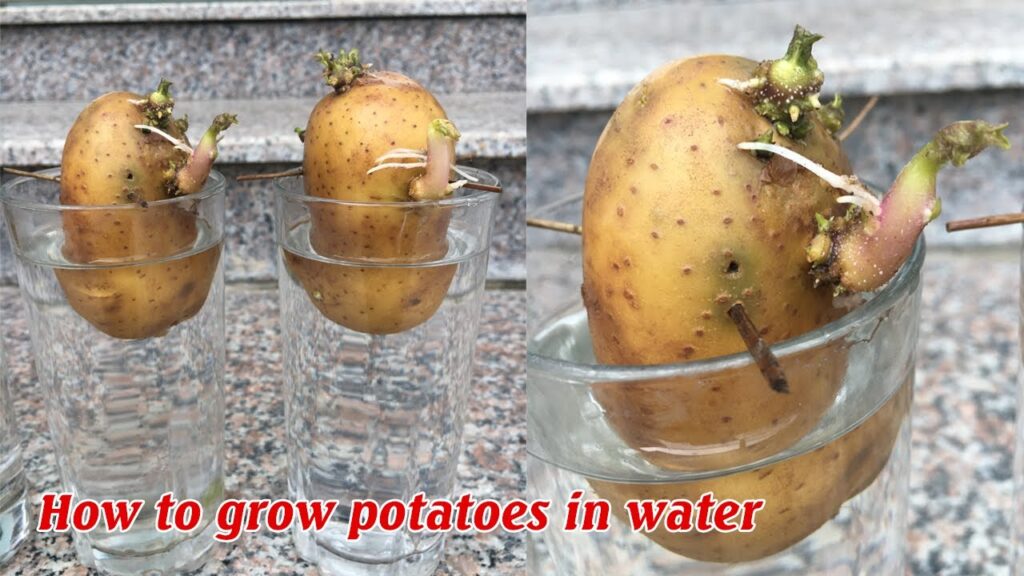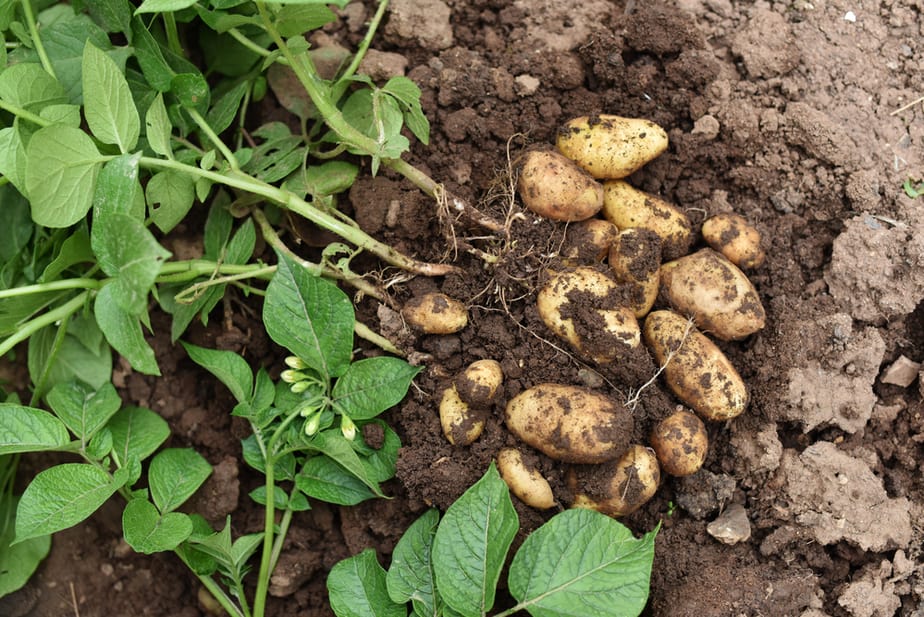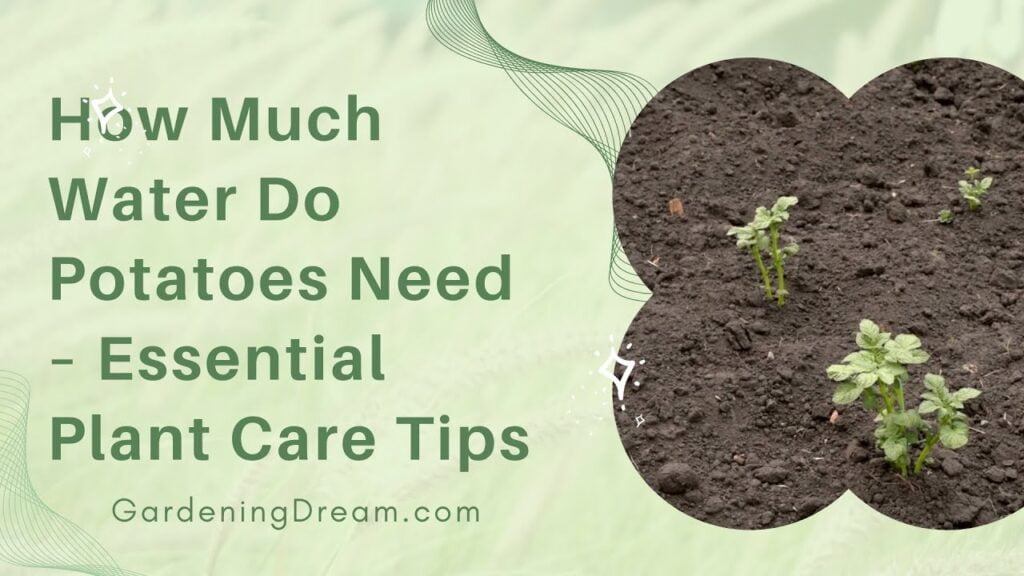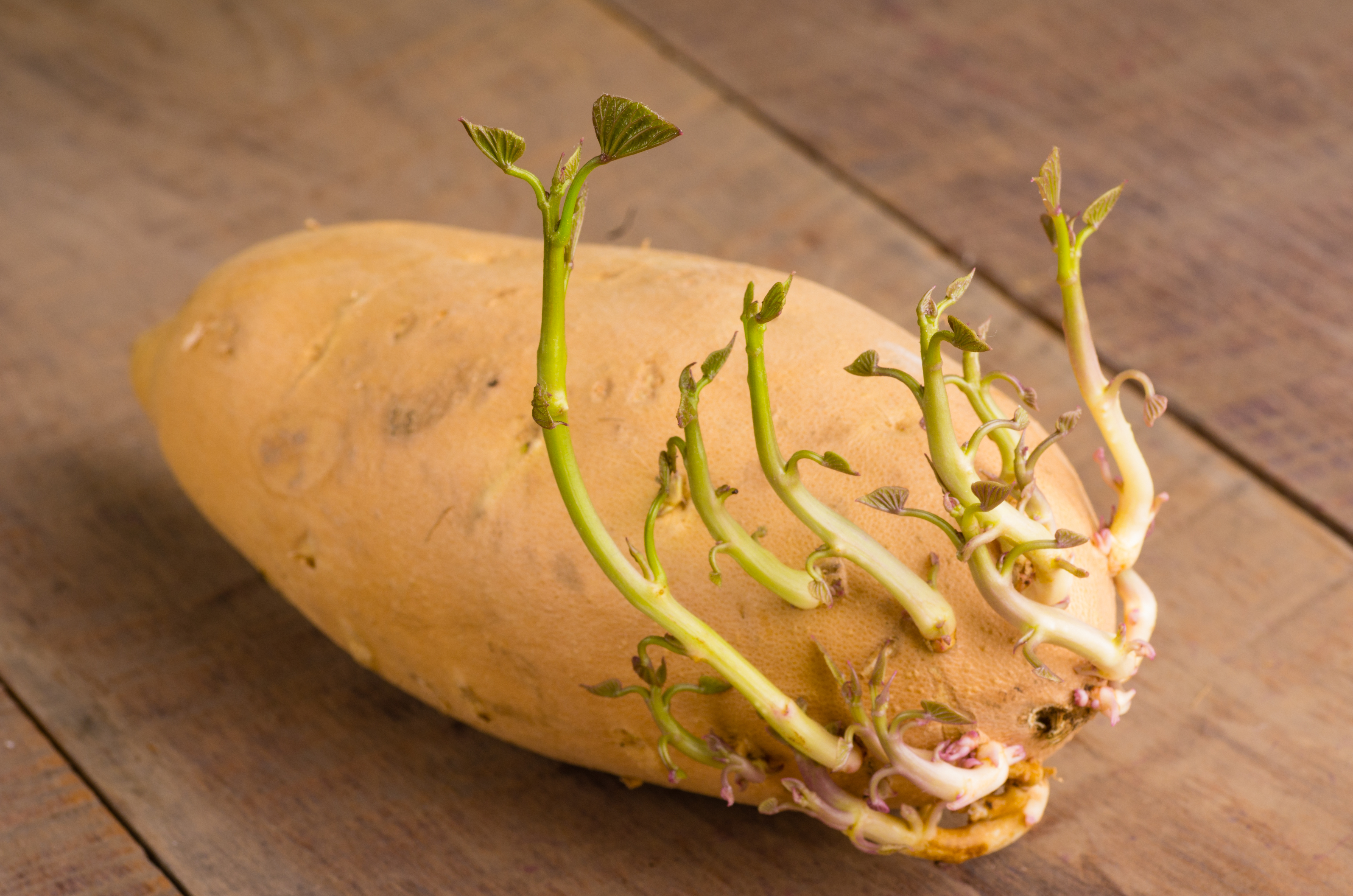Potatoes, a staple crop that has been cultivated for centuries, have always demanded attention and care in order to thrive. One of the fundamental necessities in the pursuit of a successful potato crop is water. This article examines the crucial role water plays in the growth and development of potatoes, exploring the specific requirements and consequences of water availability on their cultivation. By delving into both the short-term and long-term effects of water on potatoes, a comprehensive understanding of the relationship between this essential resource and the growth of this versatile tuber will be revealed.

Factors Affecting Potato Growth
Potato plants, like any other crop, require certain environmental conditions in order to grow and develop properly. One of the most essential factors that affect potato growth is soil moisture and water availability. Water plays a vital role in various physiological processes in potatoes, from seed germination to tuber formation. Insufficient or excessive water can have detrimental effects on potato plants, leading to poor growth, reduced yield, and increased susceptibility to diseases. In this article, we will explore the importance of water for potato growth, discuss the optimum soil moisture levels for potatoes, examine different irrigation techniques, and delve into the consequences of inadequate watering. Additionally, we will provide water management tips for potato growers and highlight the importance of drought tolerance in potato cultivation.
Soil Moisture and Water Requirements
Water is a crucial element for potato plants, as it is required for numerous physiological functions. Adequate soil moisture is essential for seed germination, nutrient uptake, transpiration, and photosynthesis. During the early stages of growth, potatoes rely heavily on soil moisture for establishing a strong root system. Water is also necessary for maintaining turgor pressure within plant cells, which provides structural support to the plant and enables it to stand upright. Furthermore, water aids in the transport of nutrients throughout the plant.

Importance of Water for Potato Growth
Water is essential for the growth and development of potato plants due to its involvement in various biochemical and physiological processes. One of the key roles of water is in photosynthesis, the process by which plants convert sunlight into energy. Water is a vital component in the overall equation of photosynthesis, as it is necessary for the uptake of carbon dioxide from the atmosphere through tiny openings in the leaves called stomata. Without adequate water, the stomata close, and the plant is unable to take in carbon dioxide, leading to a decrease in photosynthetic activity and the subsequent reduction in growth.
Water is also crucial for nutrient uptake by potato plants. Most nutrients are present in the soil in the form of ions dissolved in water. The roots of potato plants absorb these nutrients along with water, facilitating their transport to the aerial parts of the plant. Inadequate water availability can hinder nutrient uptake, resulting in nutrient deficiencies and poor growth.
Effect of Water Stress on Potatoes
Water stress occurs when plants do not receive sufficient water to meet their physiological requirements. Both drought stress (inadequate water availability) and waterlogging (excessive water) can negatively impact potato plants. Water stress can lead to reduced cell turgor pressure, resulting in wilting, stunted growth, and decreased photosynthetic activity.
During periods of water stress, potato plants prioritize the allocation of water to essential functions, such as maintaining cell turgor and photosynthesis, at the expense of other processes. As a result, non-essential processes, such as reproductive growth and tuber development, may be compromised. This can lead to smaller tuber size and reduced yield.
Furthermore, water stress increases the susceptibility of potato plants to diseases and pests. Stressed plants have weaker defense mechanisms, making them more vulnerable to pathogens and insect infestations. Therefore, maintaining appropriate soil moisture levels is crucial for mitigating the risk of disease outbreaks and ensuring the overall health of potato plants.

Optimum Soil Moisture for Potatoes
To achieve optimal growth and development, potato plants require specific soil moisture levels. The ideal soil moisture range for potatoes depends on several factors, including soil type, weather conditions, and the growth stage of the plants. Generally, a soil moisture content of 60-80% of the field capacity is considered ideal for potato cultivation. Field capacity refers to the maximum amount of water that the soil can hold after excess water has drained away. At this moisture level, the soil provides sufficient water to the plants, while also allowing for proper aeration of the root zone.
Determining soil moisture content can be done through various methods, such as soil sampling and using moisture meters. Soil samples can be taken at different depths and analyzed to assess the moisture content. Moisture meters, on the other hand, can provide instant readings of the soil moisture levels. By regularly monitoring soil moisture, growers can adjust their irrigation practices accordingly and ensure that the potato plants receive the optimal amount of water.
However, it is important to note that overwatering can be just as detrimental to potato plants as underwatering. Excessive soil moisture can lead to waterlogging, which deprives the roots of oxygen. Oxygen is required for root respiration and nutrient absorption, so waterlogging can severely impair root function and overall plant health. Additionally, waterlogged soil creates an anaerobic environment that promotes the growth of harmful microorganisms, increasing the risk of root rot and other diseases.
Irrigation Techniques for Potatoes
Potatoes can be irrigated using various techniques, each with their own advantages and considerations. Three common irrigation methods used in potato cultivation are surface irrigation, sprinkler irrigation, and drip irrigation.
Surface irrigation is a traditional method that involves flooding or furrow irrigation. In this technique, water is applied directly to the soil surface and allowed to infiltrate through gravity. Surface irrigation is relatively simple and inexpensive, but it can result in water loss due to evaporation and runoff. It is also challenging to control the uniformity of water distribution, which may lead to uneven soil moisture and potentially affect potato growth.
Sprinkler irrigation involves overhead application of water through sprinklers. This method allows for better control and uniform distribution of water, reducing water loss and ensuring that each plant receives an adequate supply. However, sprinkler irrigation can be more costly due to the equipment required, and there is a risk of water droplets landing on the foliage, which can increase the susceptibility of potato plants to diseases.
Drip irrigation, also known as trickle irrigation, is a highly efficient method that delivers water directly to the root zone of plants. Water is applied slowly and continuously through small emitters or drippers, minimizing water loss through evaporation and runoff. Drip irrigation also allows for precise control of water application, making it easier to maintain optimal soil moisture levels for potatoes. However, the initial setup cost of drip irrigation systems can be higher compared to other methods.
When deciding which irrigation technique to use, potato growers should consider factors such as the availability of water resources, the size and topography of the field, and the specific needs of their potato varieties. By selecting the most suitable irrigation method, growers can optimize water use efficiency and ensure the healthy growth of their potato crops.
Frequency and Timing of Irrigation
The frequency and timing of irrigation play a critical role in the success of potato cultivation. The irrigation schedule should be based on the water requirements of potato plants, which can vary depending on factors such as temperature, humidity, rainfall, and growth stage. In general, potatoes require regular and consistent irrigation, especially during the tuber initiation and bulking stages when water demand is highest.
During the pre-planting and planting stage, it is important to ensure that the soil is adequately moist to support seed germination and early root development. Proper soil preparation, including incorporating organic matter and improving soil structure, can help retain moisture and reduce the frequency of irrigation during this stage.
In the vegetative growth stage, potatoes require sufficient water for foliage and lateral shoot development. Water stress during this stage can result in stunted growth and decreased photosynthetic activity. Regular monitoring of soil moisture, combined with appropriate irrigation scheduling, can help maintain optimal soil moisture levels and support vigorous vegetative growth.
The tuber initiation and bulking stage is a critical period for potato crops, as it determines tuber size and yield. During this stage, potatoes have high water requirements to support tuberization and the enlargement of tubers. Adequate soil moisture is essential to ensure optimal tuber development and prevent physiological disorders, such as hollow heart and internal brown spot.
As the potatoes approach the maturation and harvesting stage, irrigation should be gradually reduced to allow the plants to naturally senesce and the tubers to mature. This helps enhance skin set and improve storage quality. However, it is important to carefully manage irrigation during this period to prevent excessive water stress, which can lead to premature senescence and reduced yield.
Consequences of Inadequate Watering
Inadequate watering can have profound effects on potato plants, resulting in poor tuber development, reduced yield, and increased susceptibility to plant stress and diseases. Understanding the consequences of inadequate watering is crucial for potato growers to implement effective water management strategies and optimize their crop production.
Poor tuber development is one of the major consequences of inadequate watering. Insufficient soil moisture during the tuber initiation and bulking stages can lead to smaller tubers, irregular shape, and low specific gravity. The specific gravity of potatoes is an important quality parameter that affects their processing and market value. Inadequate water supply during tuber development can result in low specific gravity, leading to lower-quality potatoes and lower market prices.
Reduced yield is another consequence of inadequate watering. Water stress during critical growth stages negatively impacts overall plant growth and development, translating into lower tuber yield. Insufficient water availability limits nutrient uptake and photosynthetic activity, resulting in decreased carbohydrate assimilation and reduced tuber set. Additionally, inadequate water supply increases the risk of premature senescence and plant death, further decreasing yield potential.
Plant stress and diseases are also more likely to occur in potato plants that experience inadequate watering. Water-stressed plants have weaker defense mechanisms and are more susceptible to insect pests and diseases. Moreover, incorrect irrigation practices, such as overwatering or uneven watering, can promote the growth and spread of soil-borne pathogens, leading to root rot and other diseases. Maintaining appropriate soil moisture levels through proper irrigation management is essential for minimizing the risk of plant stress and disease outbreaks.

Watering Practices During Different Growth Stages
To ensure optimal water use and maximize potato crop production, it is important to adjust watering practices according to the specific growth stages of potatoes. Different growth stages have varying water requirements, and being mindful of these requirements can help optimize water use efficiency and overall plant performance.
During the pre-planting and planting stage, it is crucial to establish a good soil moisture profile. Adequate soil moisture promotes seed germination and supports early root development. Proper watering before planting ensures that the soil is moist and facilitates the seed’s absorption of moisture, allowing for timely and uniform germination. It is important to provide sufficient water during this stage while avoiding excessive moisture, which can lead to waterlogging and hinder seedling establishment.
In the vegetative growth stage, potatoes require consistent soil moisture to support robust foliage growth and lateral shoot development. Adequate water supply during this stage is essential for maintaining high photosynthetic activity and nutrient uptake. Regular monitoring of soil moisture levels and adjusting irrigation scheduling accordingly is crucial to meet the water demands of potato plants.
During the tuber initiation and bulking stage, potatoes have the highest water requirement due to the active tuberization and enlargement process. This stage is critical in determining tuber size and yield. Inadequate water supply during this period can result in small and misshapen tubers, negatively impacting overall crop quality and market value. It is important to provide sufficient water while also ensuring good drainage to prevent waterlogging, which can lead to tuber diseases.
As the potatoes approach the maturation and harvesting stage, irrigation should be gradually reduced to promote natural senescence and tuber maturity. However, it is important to strike a balance between providing enough moisture for the completion of tuber growth and avoiding excessive moisture that can cause tuber quality issues. Careful monitoring of soil moisture and adjusting irrigation practices based on the crop’s specific needs during this stage can ensure optimal tuber maturity and improve storage quality.
Factors to Consider for Efficient Water Use
Efficient water use in potato cultivation requires careful consideration of various factors. By implementing effective water management strategies, growers can optimize water use efficiency and minimize wastage. Some key factors to consider for efficient water use include proper irrigation scheduling, mulching, crop rotation, and soil management.
Proper irrigation scheduling is crucial for efficient water use. Monitoring soil moisture levels and adjusting irrigation frequency and duration based on the crop’s specific needs can help prevent unnecessary water loss and ensure that water is applied when and where it is most needed. Implementing technologies such as soil moisture sensors and weather-based irrigation controllers can provide real-time data and help automate irrigation scheduling, improving water use efficiency.
Mulching is another effective technique for reducing water loss through evaporation and improving soil moisture retention. Applying organic or synthetic mulch to the soil surface helps conserve soil moisture, suppress weed growth, and regulate soil temperature. Mulching also enhances soil structure and fertility over time, promoting healthy root development and overall plant growth. Choosing the appropriate type and thickness of mulch is important, as it can vary depending on factors such as climate, soil type, and crop requirements.
Crop rotation and proper soil management practices can also contribute to efficient water use in potato cultivation. Crop rotation helps break pest and disease cycles, reducing the need for chemical inputs and minimizing the risk of water contamination. Additionally, incorporating organic matter into the soil improves its water-holding capacity, nutrient availability, and overall structure. Well-structured soils with good water-holding capacity can retain moisture for longer periods, reducing the frequency of irrigation and improving water use efficiency.
Drought Tolerance in Potatoes
Given the potential challenges posed by water scarcity, developing and cultivating drought-tolerant potato varieties is of great importance. Drought-tolerant varieties possess genetic traits that enable them to withstand and survive periods of limited water availability. These traits may include deep root systems, efficient water absorption and utilization, and the ability to maintain cellular hydration under drought stress.
Breeding for drought tolerance involves selecting and crossing potato plants with favorable drought-related characteristics, followed by rigorous evaluations and selection of superior individuals. This process aims to develop potato varieties that have enhanced drought tolerance without compromising other desirable traits, such as high yield, disease resistance, and good tuber quality. Drought-tolerant varieties can help mitigate crop losses caused by water scarcity and contribute to sustainable potato production in regions prone to drought.
Water Management Tips for Potato Growers
To effectively manage water in potato cultivation, growers should consider several key practices. These tips can help optimize water use efficiency, promote healthy crop growth, and minimize the risk of yield loss and plant stress.
Monitoring soil moisture is crucial for successful water management. Regularly assessing soil moisture levels at different depths and using appropriate measurement tools, such as soil moisture sensors or tensiometers, allows growers to make informed decisions about irrigation scheduling. Monitoring should be carried out at various locations within the field to account for soil variability.
Adjusting irrigation practices based on weather conditions is important to avoid both under- and overwatering. Weather parameters such as temperature, rainfall, and humidity influence the rate of evapotranspiration, which affects the water demand of potato plants. Using weather data and evapotranspiration models can help growers estimate crop water requirements and adjust irrigation accordingly.
Avoiding overwatering is crucial for preventing waterlogging and ensuring optimal root health. Excessive soil moisture can deprive the roots of oxygen, leading to root suffocation and the development of diseases. Overwatering can also result in nutrient leaching and soil erosion. By monitoring soil moisture levels and adjusting irrigation practices accordingly, growers can avoid the negative impacts of overwatering and maintain good drainage within the root zone.
Maintaining good drainage is essential for preventing waterlogging and root-related disorders. Proper field drainage ensures the removal of excess water from the root zone, preventing the buildup of waterlogged conditions. Implementing appropriate land leveling, installing drainage systems (such as subsurface drains or open ditches), and managing soil structure and compaction contribute to good drainage and prevent waterlogging issues.
Potential Watering Problems and Solutions
Potato growers may encounter various watering problems that can affect plant health and crop productivity. Understanding these problems and implementing appropriate solutions is important for effective water management.
Waterlogging, which occurs when the soil becomes saturated with water and lacks proper drainage, is a common problem in potato cultivation. Waterlogged conditions hinder root respiration, nutrient uptake, and overall plant growth. To address waterlogging, growers can improve field drainage by installing subsurface drains, constructing open ditches, or implementing raised beds. Proper land leveling and incorporating organic matter into the soil can also enhance drainage capacity.
Drought is another significant watering problem that can severely impact potato crops. During periods of limited water availability, it is crucial to prioritize irrigation and ensure that water is applied efficiently. Implementing techniques such as mulching, modifying irrigation scheduling based on weather conditions, and selecting drought-tolerant potato varieties can help mitigate the effects of drought and improve crop resilience.
Improper irrigation system design and management can also lead to watering problems in potato cultivation. Insufficient irrigation infrastructure, such as inadequate water supply or inefficient distribution systems, can result in uneven water application and subsequent crop stress. To address these issues, growers should regularly inspect and maintain their irrigation systems, ensuring that there are no leaks, clogs, or other inefficiencies. Upgrading to modern irrigation technologies, such as drip irrigation, can also improve water use efficiency and reduce water wastage.
Conclusion
Potatoes require adequate soil moisture for optimal growth and development. Water is essential for various physiological processes in potatoes, including seed germination, nutrient uptake, photosynthesis, and tuber formation. Maintaining proper soil moisture levels is crucial to ensure healthy potato plants and maximize crop productivity. Factors such as irrigation technique, frequency, and timing, as well as water management practices, play a significant role in managing water effectively in potato cultivation. By implementing proper irrigation scheduling, maintaining good drainage, and considering factors like mulching and crop rotation, growers can optimize water use efficiency, improve crop resilience, and mitigate the risk of yield loss and plant stress. Additionally, developing and cultivating drought-tolerant potato varieties can contribute to sustainable potato production in regions prone to water scarcity. By understanding the factors affecting potato growth and the importance of water management, growers can enhance their potato production practices, ultimately benefiting both their crops and the overall agricultural industry.




